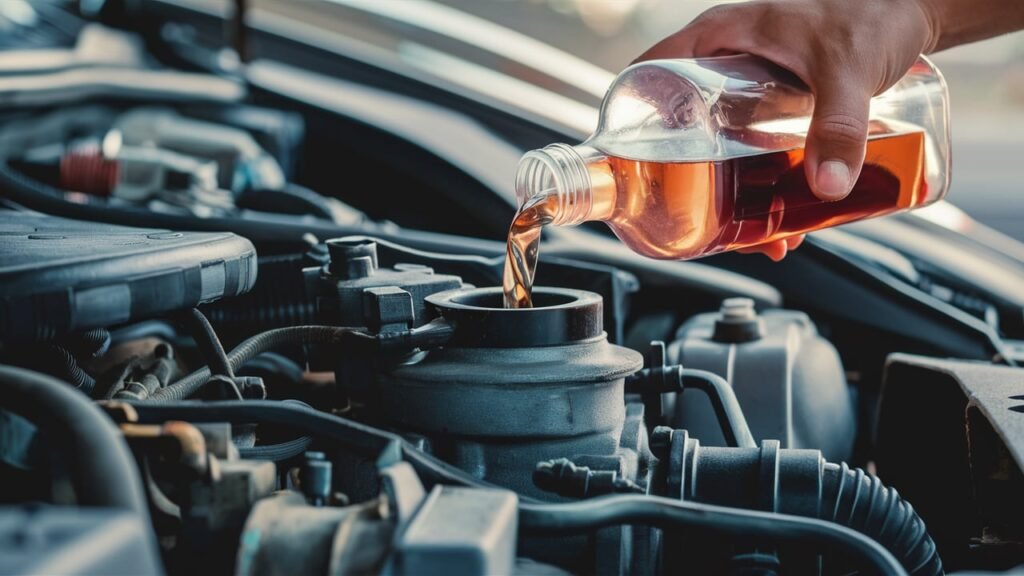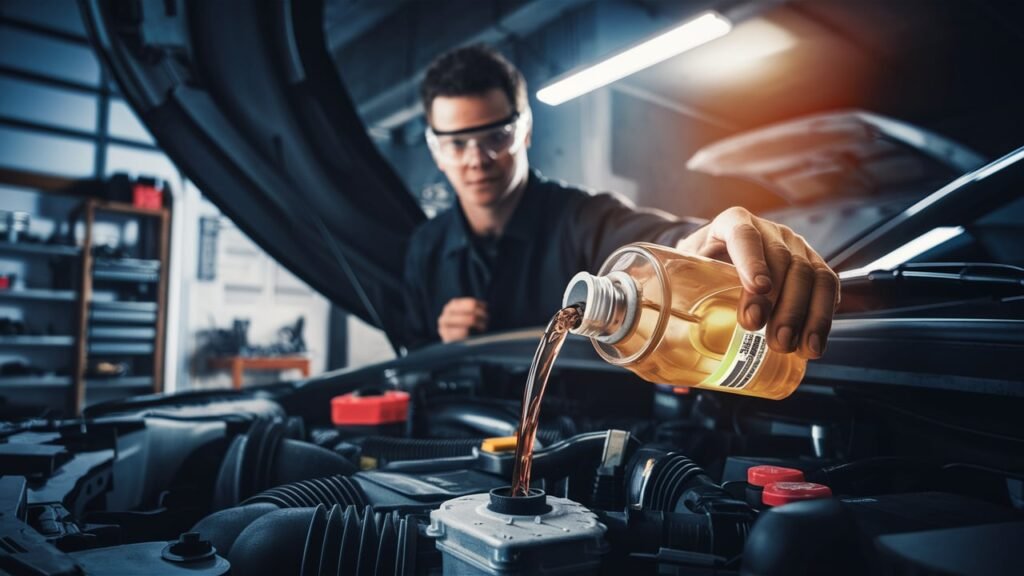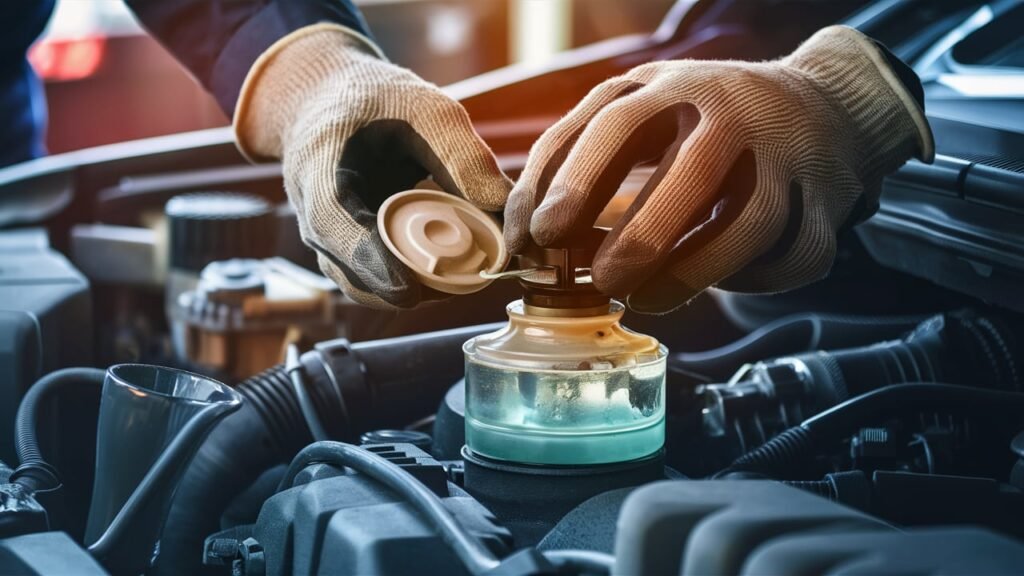
Understanding Car Engine Timing: A Comprehensive Guide
Engine timing is critical for the proper functioning and performance of a vehicle’s engine. There are two main types of engine timing – cam timing and ignition timing.
Cam Timing.
Cam timing refers to the synchronization of the engine’s camshafts with the crankshaft. The camshafts control the opening and closing of the engine’s intake and exhaust valves, which must be perfectly timed with the movement of the pistons. If the cam timing is off, the valves can collide with the pistons, causing serious engine damage. The camshafts are connected to the crankshaft via a timing chain, belt, or gears. As the crankshaft rotates, it turns the camshafts in a precise, timed manner to ensure the valves open and close at the correct moments during each engine cycle.
Ignition Timing.
Ignition timing refers to when the spark plugs fire to ignite the air-fuel mixture in the engine’s cylinders. Proper ignition timing is crucial for efficient combustion and engine performance. The ignition timing is controlled by the engine’s computer or distributor (in older vehicles). It needs to be precisely timed to fire the spark plugs just before the piston reaches top dead center on the compression stroke. If the ignition timing is off, it can cause issues like engine knocking, poor fuel economy, and reduced power output.
Symptoms of Timing Issues.
Some common symptoms of improper engine timing include:
- Engine misfiring or rough running
- Poor fuel economy
- Lack of power or acceleration
- Engine knocking or pinging
- Difficulty starting the engine
- Check engine light illuminated
If any of these issues arise, it’s important to have the engine timing checked and adjusted by a qualified mechanic as soon as possible to prevent further damage.
In summary, proper engine timing, both cam timing and ignition timing, is essential for optimal engine performance, efficiency, and longevity. Understanding how engine timing works and recognizing the signs of timing issues can help vehicle owners maintain their cars and address any problems promptly.
In the intricate symphony of mechanical systems that power our automobiles, car engine timing stands as a crucial conductor orchestrating the harmonious execution of combustion processes.
Defined as the precise synchronization between the movements of pistons and valves within an engine, this fundamental aspect governs the very heartbeat of automotive performance. An understanding of car engine timing transcends mere mechanical knowledge; it unveils the underlying principles dictating efficiency, power output, and overall operational prowess.

Embracing the depths of car engine timing grants enthusiasts, skilled mechanics, and discerning car owners alike a gateway into unlocking optimal vehicle functionality. As we delve into this comprehensive guide tailored to shed light on every cog of this intricate mechanism, one thing becomes undeniably clear—the significance of comprehending engine timing reverberates throughout every revving machine.
From maximizing fuel efficiency to optimizing horsepower, navigating the realms of correct engine timing is not merely a choice but a necessity in fostering peak automotive operation. By demystifying this technical domain with precision and insight, we embark on a journey that propels us towards an unparalleled understanding of what propels our beloved vehicles forward.
Basics of Car Engine Timing.
Car engine timing is crucial for the optimal performance and efficiency of a vehicle. Understanding how car engine timing works involves synchronizing the opening and closing of the engine’s valves with the movement of the pistons.
In a four-stroke engine, precise timing ensures that the intake valve opens to allow air and fuel into the combustion chamber, closes to seal it, then reopens to release exhaust gases—coordinating these actions with piston movement maximizes power generation.
Several components are integral to maintaining proper engine timing. The camshaft, connected to the crankshaft via a belt or chain drive, controls valve operation. The crankshaft determines piston position while the camshaft manages valve timing—a well-timed interaction between these parts is vital for harmonious engine function.
Additionally, sensors like the crankshaft position sensor monitor rotation speed and provide data to adjust timing accurately.
Correct engine timing significantly impacts a vehicle’s performance and fuel efficiency. When timing is precisely calibrated, power output improves as fuel burns more efficiently during combustion. This optimized combustion process not only enhances horsepower but also aids in reducing emissions.
Fuel efficiency benefits from accurate timing as proper synchronization minimizes wasted energy, enabling better mileage per gallon. In essence, fine-tuning engine timings can lead to a smoother driving experience and economic operation of your vehicle.
Types of Car Engine Timing Systems.
Car engines employ different timing systems to synchronize the movements of internal components crucial for efficient operation. Belt-driven timing systems utilize a rubber belt connecting the crankshaft and camshaft, ensuring precise coordination between engine parts.
These systems typically require periodic replacement due to wear and tear, with manufacturers recommending changing them at specific mileage intervals. For instance, a popular example is the interference engine setup where improper belt maintenance can lead to severe engine damage if it snaps, illustrating the critical role of proper timing system upkeep.
In contrast, chain-driven timing systems utilize a metal chain instead of a rubber belt to drive the camshaft in sync with the crankshaft. This design offers greater durability compared to belts but may produce more noise during operation.

Despite being more robust, chains also demand regular inspection and tension adjustments to prevent potential issues like elongation that can disrupt accurate timing. For example, luxury vehicle manufacturers often prefer chain-driven systems for their reliability under high-stress conditions, emphasizing longevity as a key advantage over belt-driven counterparts.
When comparing belt-driven and chain-driven timing systems, factors like cost, noise levels, maintenance requirements, and performance expectations come into play. While belts are generally quieter but less durable than chains, they offer smoother operation when well-maintained.
Chains excel in longevity and ruggedness but demand stricter servicing schedules to ensure optimal function. Understanding these distinctions helps car owners and mechanics choose the most suitable timing system for their specific needs based on factors such as driving habits and budget considerations while maintaining performance standards set by manufacturers.
Signs of Incorrect Engine Timing.
Incorrect engine timing can manifest through various signs that keen auto enthusiasts or mechanics should be able to recognize. One common symptom is engine misfires, where the combustion process doesn’t happen at the right moment due to improper timing, leading to a rough-running engine.
Additionally, difficulties in starting the vehicle or stalling during operation could indicate a timing issue. These symptoms may also be accompanied by decreased fuel efficiency as the engine struggles to operate efficiently with incorrect timing.
The effects of incorrect engine timing extend beyond immediate performance issues and can impact the long-term health of your vehicle. Continuous running with faulty timing can result in damage to vital components like valves and pistons.
For instance, if the intake valve opens too soon, it could collide with the rising piston, causing serious damage and potentially requiring costly repairs. Moreover, prolonged driving with incorrect timing puts additional stress on various engine parts, reducing their lifespan and overall reliability.
Promptly addressing any suspected timing issues is crucial to prevent further damage and maintain optimal engine performance. Ignoring signs of incorrect timing can lead to more extensive repairs and increased expenses down the road.
Any changes in how your car runs or sounds should prompt a thorough inspection by a qualified mechanic to diagnose and correct any timing discrepancies efficiently. Proactive maintenance ensures that your vehicle operates smoothly, safely, and with maximum efficiency for years to come.
Adjusting Car Engine Timing.
When it comes to adjusting car engine timing, a systematic approach is vital to ensure optimal performance. Firstly, checking and adjusting ignition timing requires precision. Start by locating the timing marks on both the engine and the harmonic balancer.
With the engine off, connect a timing light to the battery and spark plug wire of cylinder one. Next, start the engine and aim the light at the timing marks to determine if they align correctly according to manufacturer specifications. If adjustments are necessary, proceed cautiously.
The tools required for adjusting engine timing vary depending on the specific vehicle model. Commonly needed tools include a timing light, distributor wrenches, and in some cases, a scan tool for more modern vehicles with electronic ignition systems.

Utilizing these tools accurately is crucial to avoid causing further issues that could impact your car’s overall performance. Precision in using these tools ensures that any adjustments made are done correctly without compromising other components of the engine system.
Following manufacturer specifications while adjusting timing is non-negotiable in maintaining your car’s health. Each vehicle has unique requirements regarding ignition timing which directly impacts fuel efficiency, power output, and emissions control.
Deviating from these specifications can lead to decreased performance or even mechanical damage over time. For example, many modern engines with variable valve timing (VVT) rely heavily on precise camshaft positions controlled by advanced sensors to optimize efficiency and power delivery. Ignoring manufacturer guidelines could disrupt this delicate balance.
By meticulously adhering to recommended procedures and utilizing appropriate tools for checking and adjusting engine timing, you ensure that your vehicle runs smoothly with optimal efficiency and longevity intact. Remember, small adjustments can make a significant difference in how your engine operates daily; hence precision and care during this process are paramount for sustained performance.
Advancements in Engine Timing Technology.
As technology has progressed, the automotive industry has witnessed significant advancements in engine timing systems. One notable evolution is the transition from traditional mechanical ignition systems to more sophisticated electronic ignition systems.
In mechanical systems, ignition timing was primarily set using mechanical components like distributors and points. However, electronic ignition systems utilize electronic control units (ECUs) to precisely regulate the timing of spark plug firing based on inputs like engine speed, throttle position, and temperature.
This shift has led to more accurate and efficient engine performance while reducing maintenance needs associated with mechanical components.

Additionally, variable valve timing (VVT) technology has revolutionized how engines optimize performance and efficiency. VVT allows for adjustments in the timing of the opening and closing of intake and exhaust valves based on driving conditions.
By altering valve timing, engines can achieve better power delivery across different RPM ranges, improved fuel efficiency, and reduced emissions. For example, a VVT system can advance or retard camshaft timing to enhance torque at low speeds for better acceleration or improve fuel economy by optimizing valve overlap at cruising speeds.
Furthermore, modern vehicles increasingly rely on computer-controlled engine management systems to finely tune engine timings. These sophisticated systems monitor various parameters such as air-fuel ratios, exhaust gas recirculation (EGR), and sensor feedback to adjust ignition timing dynamically in real-time.
By constantly optimizing engine timings based on multiple inputs and operational conditions, these computer-controlled systems ensure maximum efficiency and performance while maintaining compliance with emission regulations.
For instance, when an engine management system detects knocking—a condition caused by incorrect ignition timing—it can swiftly adjust spark timing to prevent damage and maintain optimal performance under all circumstances.
Overall, the integration of electronic ignition systems, VVT technology, and computer-controlled engine management represents a leap forward in enhancing both the power output and efficiency of modern engines while simultaneously reducing their environmental impact through better control over combustion processes.
Understanding these technological advancements is crucial for auto enthusiasts and mechanics looking to stay abreast of the latest trends shaping automotive engineering.
Maintenance Tips for Optimal Engine Timing.
Ensuring proper engine timing requires a proactive approach to maintenance. Regularly scheduled maintenance tasks play a crucial role in preserving the synchronization of engine components, ultimately optimizing performance and fuel efficiency.
Routine practices like changing the timing belt or chain as per the manufacturer’s recommendations are essential. Ignoring these maintenance intervals can result in serious engine damage due to potential timing component failures.
Professional inspections and tune-ups are critical aspects of maintaining optimal engine timing. Trained technicians have the expertise to detect subtle issues that may affect engine timing before they escalate into major problems.
Through diagnostic tools and specialized knowledge, professionals can identify irregularities in timing systems, allowing for timely interventions that prevent expensive repairs down the road. Additionally, professional tune-ups help fine-tune engine parameters to ensure precise timing alignment.
Driving habits also play a significant role in influencing engine timing. Aggressive driving behaviors such as abrupt acceleration or sudden braking can strain the engine and its timing components, potentially leading to premature wear or misalignment.

By adopting smooth driving practices and avoiding unnecessary stress on the engine, car owners can prolong the life of their timing system. Consistent driving at moderate speeds allows the engine to maintain steady performance without excessive strain on critical components, contributing to overall longevity and reliability.
By adhering to recommended maintenance schedules, seeking professional assistance when needed, and practicing mindful driving habits, car owners can uphold optimal engine timing for their vehicles.
These efforts not only enhance overall performance but also contribute to long-term cost savings by preventing avoidable mechanical issues related to incorrect timing adjustments. A holistic approach to maintenance involving both regular upkeep tasks and mindful driving behaviors is key to preserving proper engine timing and maximizing the lifespan of automotive systems.
Conclusion: Mastering Car Engine Timing.
In mastering the intricate realm of car engine timing, we have navigated through the fundamental principles governing this critical aspect of a vehicle’s operation. Our exploration has led us to understand the internal choreography that dictates the precise coordination between components to ensure optimal performance.
From unraveling the workings of belt-driven and chain-driven systems to delving into the nuances of ignition timing adjustments, our guide has illuminated pathways towards maintaining an engine’s synchronicity.
Emphasizing the pivotal role of correct engine timing emerges as a recurrent theme throughout our discussion. Ensuring that each pulse in an engine’s rhythm aligns with manufacturer specifications stands as a cornerstone for preserving both performance and longevity.
As auto enthusiasts, mechanics, and car owners now armed with this comprehensive understanding, we can collectively champion the pursuit of meticulous maintenance practices that safeguard not just individual motors but also elevate overall vehicle performance standards.
Mastery over car engine timing does not merely entail knowledge; it underscores a commitment to precision that reverberates across every mechanic’s workshop and driver’s dashboard alike.




